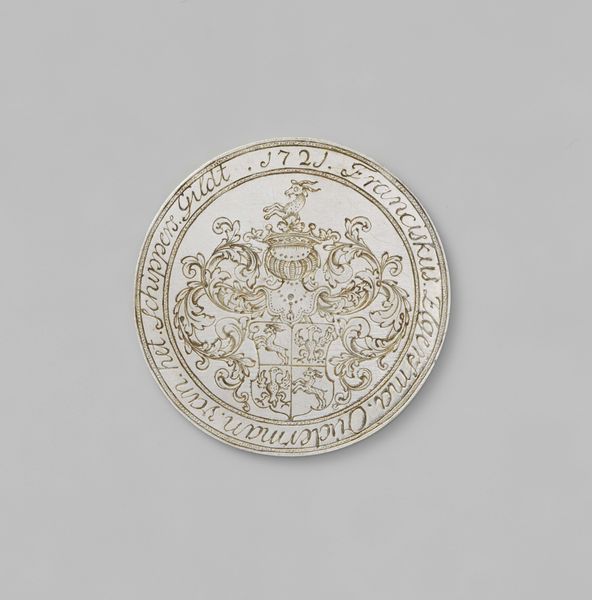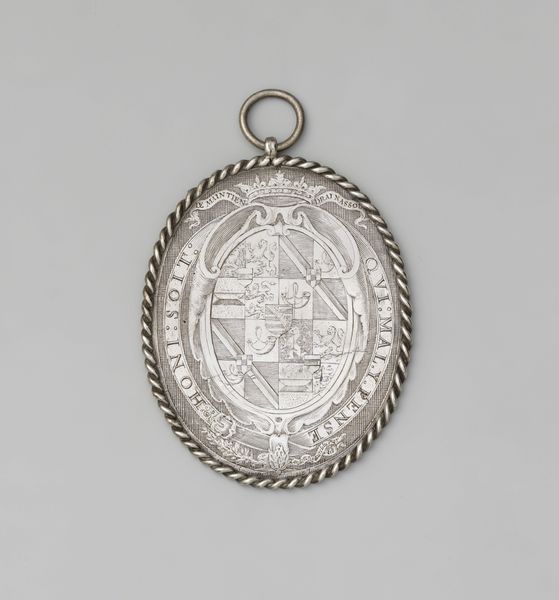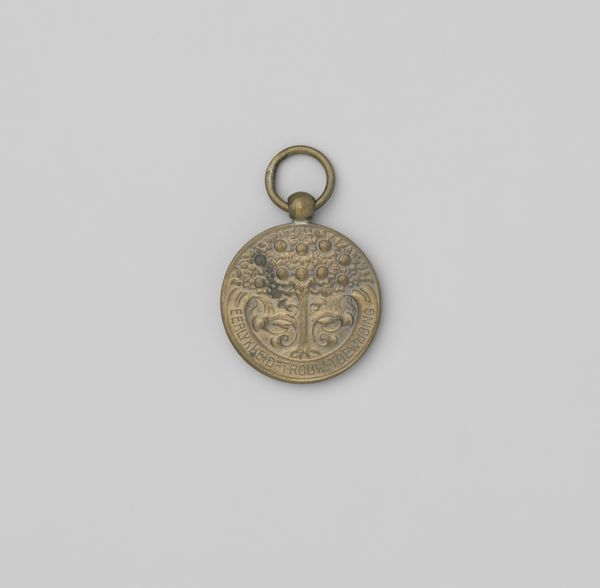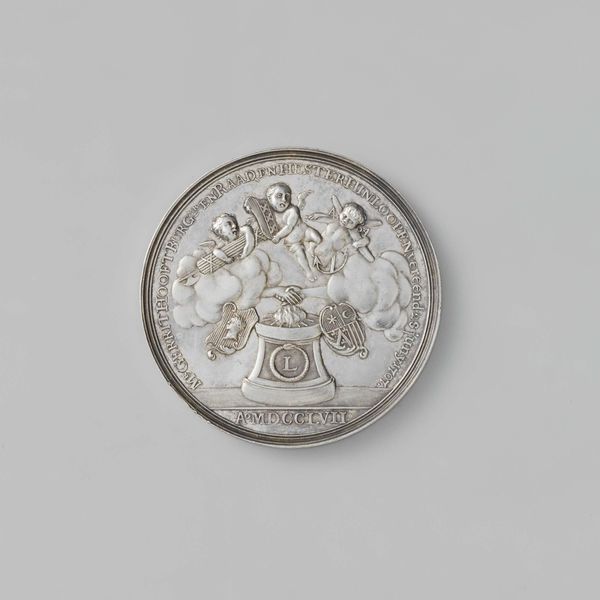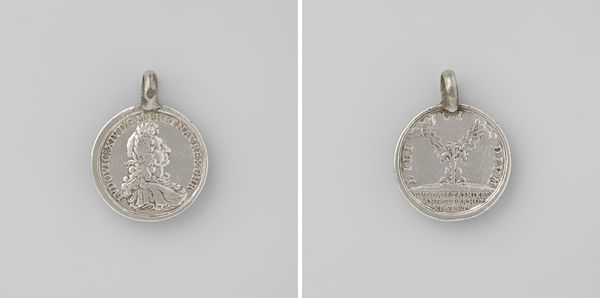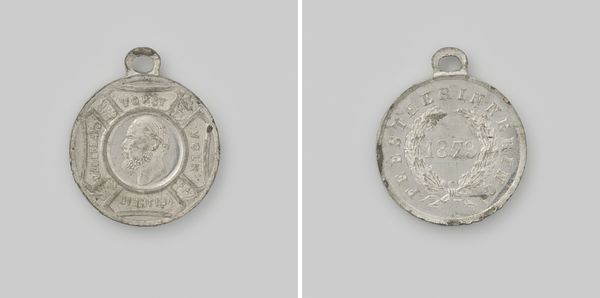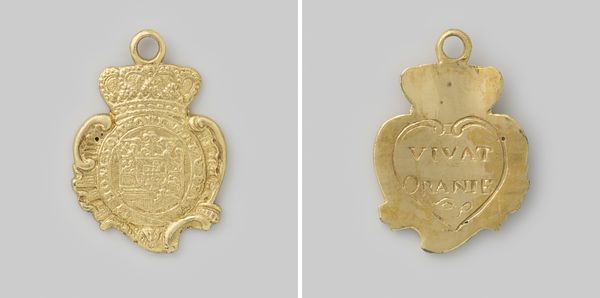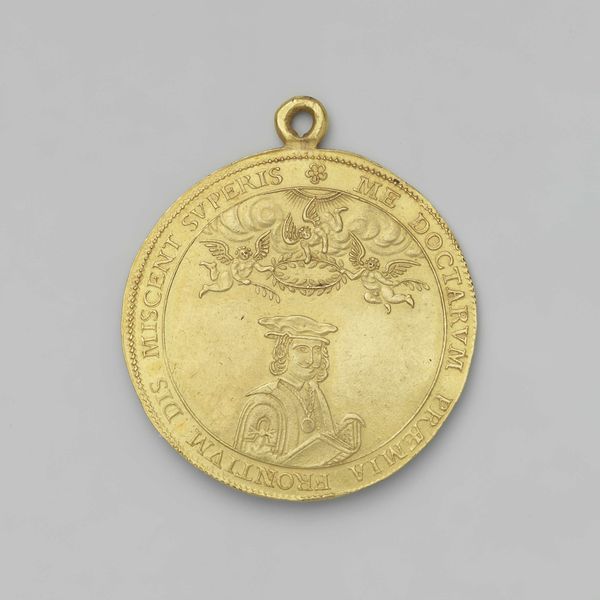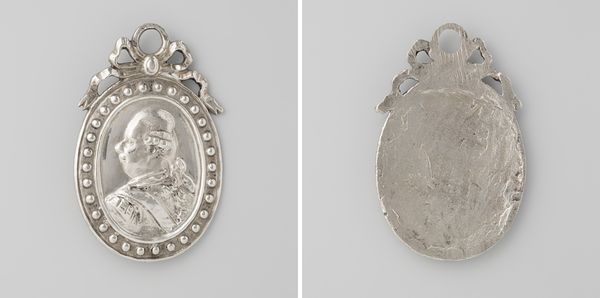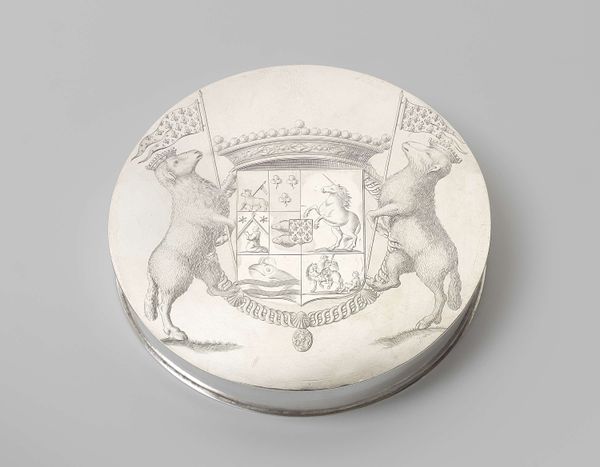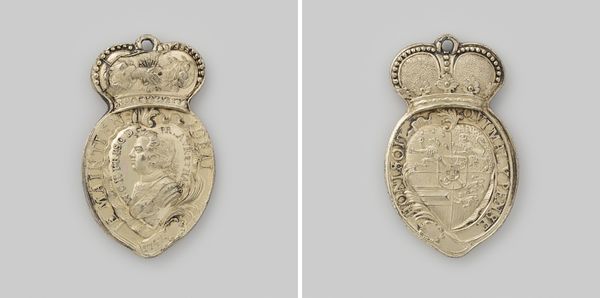
print, metal, engraving
#
portrait
# print
#
metal
#
figuration
#
ancient-mediterranean
#
history-painting
#
decorative-art
#
engraving
Dimensions: height 9.7 cm, height 9 cm, width 8.4 cm, thickness 0.2 , weight 80.29 gr
Copyright: Rijks Museum: Open Domain
This medal, made of silver in 1837 by an anonymous artist, speaks volumes about the complex and often contradictory nature of colonial history. It commemorates an enslaved man named George in the colony of Suriname. The medal shows the coat of arms of the Dutch colony, flanked by two figures who might represent indigenous people. What does it mean to reward an enslaved person within a system predicated on their dehumanization? The medal highlights the uneasy negotiation between power, resistance, and recognition. It raises questions about the narratives we construct around historical figures like George and the selective ways we acknowledge their contributions and lived experiences. This medal invites us to reflect on the ways in which societies grapple with injustice, and the complicated symbols they create in the process.
Comments
rijksmuseum about 2 years ago
⋮
An uprising erupted in the Surinamese district of Nickerie in 1836. George, who worked on the Leasowes Plantation, provided the colonial authorities with crucial information leading to the arrest of a number of enslaved people. He was rewarded with this medal. Colin, the leader of the revolt, was sentenced to death, but to this day he has continued to play a role in the oral tradition of Suriname for predicting the abolition of slavery
Join the conversation
Join millions of artists and users on Artera today and experience the ultimate creative platform.
